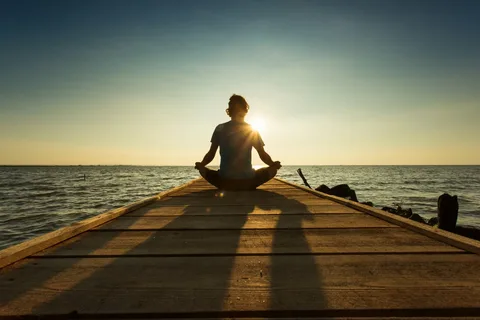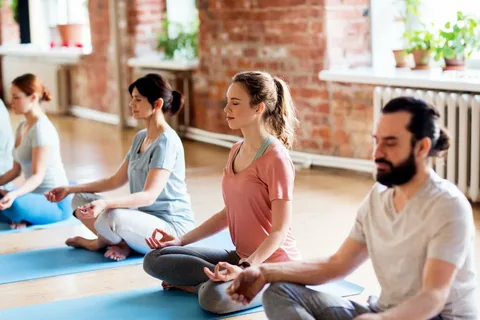Mindfulness Techniques to Calm Your Busy Mind
In the chaos of modern life, our minds rarely find a moment of stillness. With constant notifications, tight schedules, and never-ending to-do lists, it’s easy to feel mentally overwhelmed. Fortunately, there are powerful yet simple ways to restore peace to your inner world. Mindfulness & Meditation offer practical techniques to calm your busy mind and create a greater sense of clarity, focus, and balance.
Mindfulness is the practice of being fully present in the moment, while meditation involves focused techniques to train your mind. Together, Mindfulness & Meditation allow you to step away from mental clutter and engage with life more intentionally. Whether you’re new to these practices or seeking to deepen your routine, the journey starts with slowing down and tuning in.
Why the Mind Feels Overwhelmed
Our minds are constantly active, processing thoughts, emotions, and external information. This mental busyness can become exhausting, especially when we’re stuck in cycles of worry or distraction. From planning the future to replaying the past, our thoughts rarely pause to exist in the now. This disconnect leads to stress, anxiety, and a sense that life is passing us by.
Overthinking often creates problems that don’t exist in the present moment. When your mind is full, it’s difficult to focus, sleep, or even connect meaningfully with others. That’s where mindfulness techniques come in. They help us return to the present moment—the only place where true peace exists.
Getting Started with Mindfulness
You don’t need to retreat to a mountain or sit in silence for hours to practice mindfulness. It starts with becoming aware of what’s happening around and within you. Whether you’re washing dishes, walking outside, or drinking a cup of tea, the key is to pay attention. Feel the temperature, notice the sounds, observe your breath. This conscious attention anchors you in the now.
Over time, consistent mindfulness training helps reduce reactivity and increase emotional resilience. You become better at noticing when your mind is racing and learn to gently bring your focus back. This creates mental space—space to pause before reacting, to observe without judgment, and to make calmer, more intentional decisions.
Mindfulness & Meditation for Mental Clarity
Meditation is a structured way to develop mindfulness. It involves focusing your attention—often on your breath, a sound, or a word—and bringing it back whenever it wanders. It’s normal for your thoughts to drift. The point is not to eliminate thinking but to gently train your attention.
Daily meditation, even for five to ten minutes, helps reset your nervous system. It reduces stress hormones like cortisol and boosts the part of the brain responsible for decision-making and emotional regulation. With practice, you’ll notice your thoughts becoming less noisy, and your reactions more measured.
There are many forms of meditation to explore. Breath awareness is the most common, where you simply focus on the inhale and exhale. Body scan meditations help you reconnect with physical sensations, while loving-kindness meditation cultivates compassion toward yourself and others. Regardless of the method, the outcome is the same: more calm, more clarity, and more control over your mental state.

Integrating Mindfulness & Meditation into Daily Life
For lasting benefits, Mindfulness & Meditation should become a regular part of your lifestyle. You don’t need a perfect setting or large blocks of time. Start by incorporating micro-moments of awareness throughout the day. Pause before sending an email. Take a deep breath before responding in a conversation. Notice how your feet feel on the ground during a walk.
You can also create a short daily meditation routine. Choose a consistent time—morning, lunch break, or before bed—and create a quiet space where you won’t be disturbed. Use a timer or guided meditation app to stay focused. Over time, this ritual becomes a welcome refuge from mental busyness.
As mindfulness becomes part of your mindset, you’ll begin to notice subtle but powerful shifts. Stress feels less overwhelming. You respond instead of react. You experience more presence in conversations and greater joy in ordinary moments. This is the gift of Mindfulness & Meditation—it transforms how you relate to yourself, others, and the world.
FAQ: Mindfulness & Meditation
What is the difference between mindfulness and meditation?
Mindfulness is a state of awareness where you focus on the present moment. Meditation is a formal practice that helps develop mindfulness. The two are closely related and often practiced together.
How long should I meditate to see results?
Even five to ten minutes of daily meditation can produce noticeable benefits within a few weeks. Consistency is more important than duration.
Can I practice mindfulness without meditating?
Yes. You can be mindful during any activity by paying full attention to what you’re doing, observing your thoughts, and staying present in the moment.
Does mindfulness help with anxiety and stress?
Absolutely. Mindfulness has been shown to reduce stress, lower anxiety levels, and improve emotional regulation. It helps you detach from racing thoughts and respond more calmly.
Do I need a teacher or app to get started?
Not necessarily, but guided meditations and mindfulness apps can be helpful, especially for beginners. Over time, you may develop your own silent or self-guided practice.
Conclusion
In a fast-paced world, reclaiming your inner calm is not just a luxury—it’s a necessity. Mindfulness & Meditation offer time-tested techniques that help quiet your busy mind, reduce stress, and foster deeper presence in everyday life. By integrating these practices into your routine, you create mental space for clarity, focus, and emotional resilience. Remember, the path to peace begins with a single breath. And with consistent effort, a calm mind becomes not just possible—but natural.
For more info about health condition Click Here.
